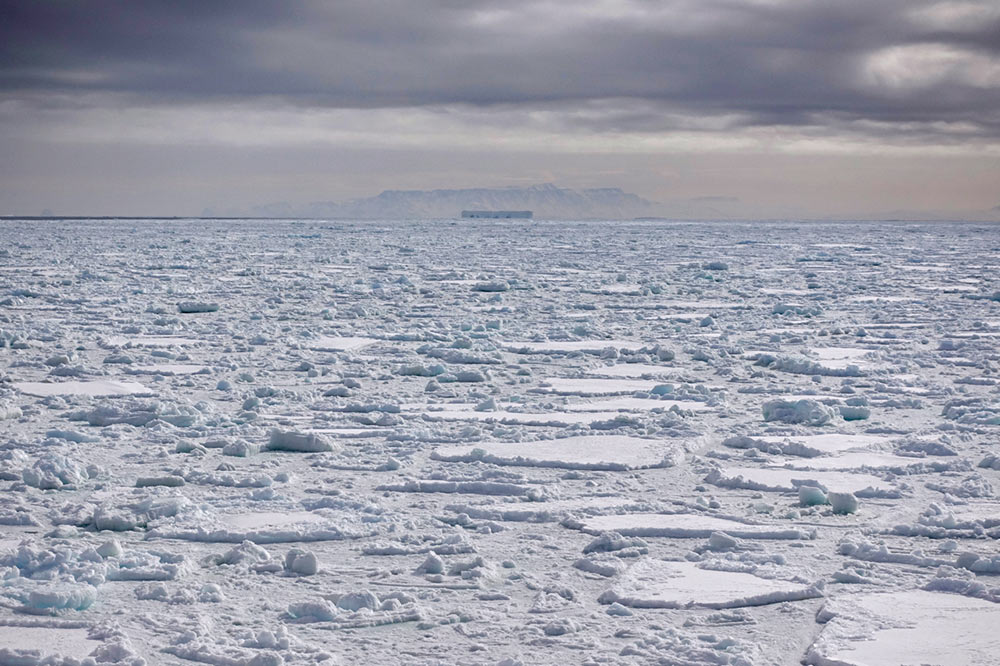
Antarctic sea ice is nearly a geographic opposite of its Arctic counterpart because Antarctica is a landmass covered in ice surrounded by an ocean, and the Arctic is an ocean of sea ice surrounded by land. As a result, almost all Antarctic sea ice that forms during the winter floats away and melts during the summer months (between December and February) due to warmer temperatures and its extended exposure to sunlight.
The southern seas surrounding Antarctica freeze to form sea ice every year. Antarctic sea ice reaches its maximum coverage in September or early October, around the end of winter in the Southern Hemisphere. At its maximum coverage, Antarctic sea ice can virtually surround the entire continent of Antarctica.
How does Antarctic sea ice form?

Like Arctic sea ice, Antarctic sea ice forms as a result of ice crystals collecting at the ocean surface, expelling salt while also increasing the salinity of the water below.
Unlike the Arctic, where a large area of sea ice lasts year-round, the sea ice around Antarctica is thinner and nearly all of it melts in a typical summer. This happens because no landmass boundary exists to prevent Antarctic sea ice from breaking up and drifting northward into warmer waters, where it eventually melts.
Impacts of Antarctic Sea Ice
- Like Arctic sea ice, Antarctic sea ice affects global climate, regional climate, and ecosystems. Because ice is more reflective than liquid water, it plays a significant role in maintaining the Earth’s energy balance and helping to keep polar regions cool. Sea ice also keeps the air cool by forming a barrier between the cold air above and the warmer water below. Antarctic sea ice is an important part of the habitat for penguins, seals, and other animals.
- Warmer air and ocean temperatures have reduced the amount of sea ice worldwide. While warming has already driven a noticeable decline in sea ice in the Arctic, extent in the Antarctic as a whole has not yet declined (and has actually increased slightly), which may reflect influences of wind patterns, ocean currents, and precipitation around the continent.